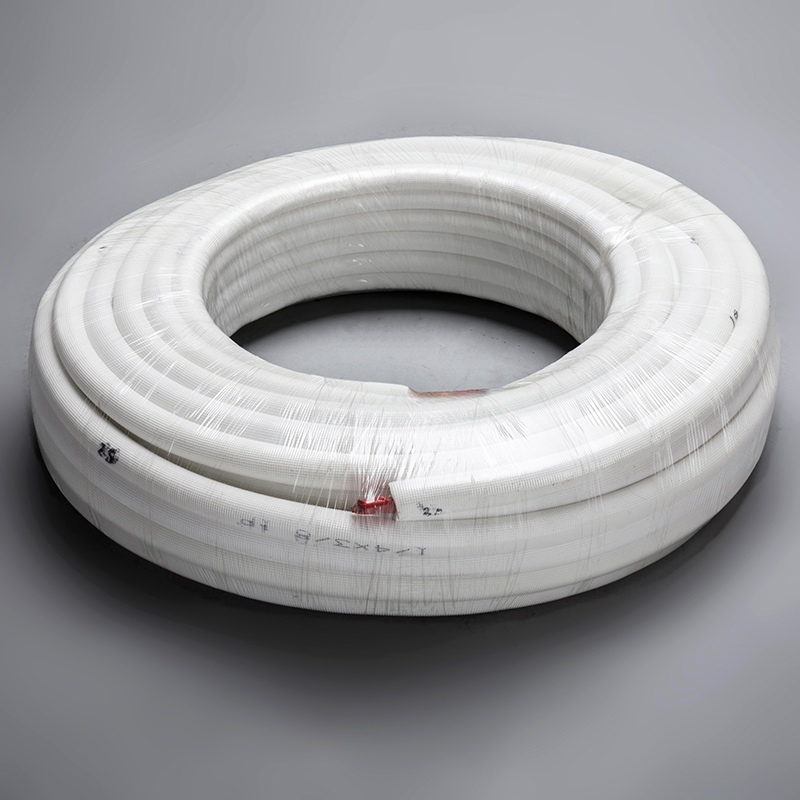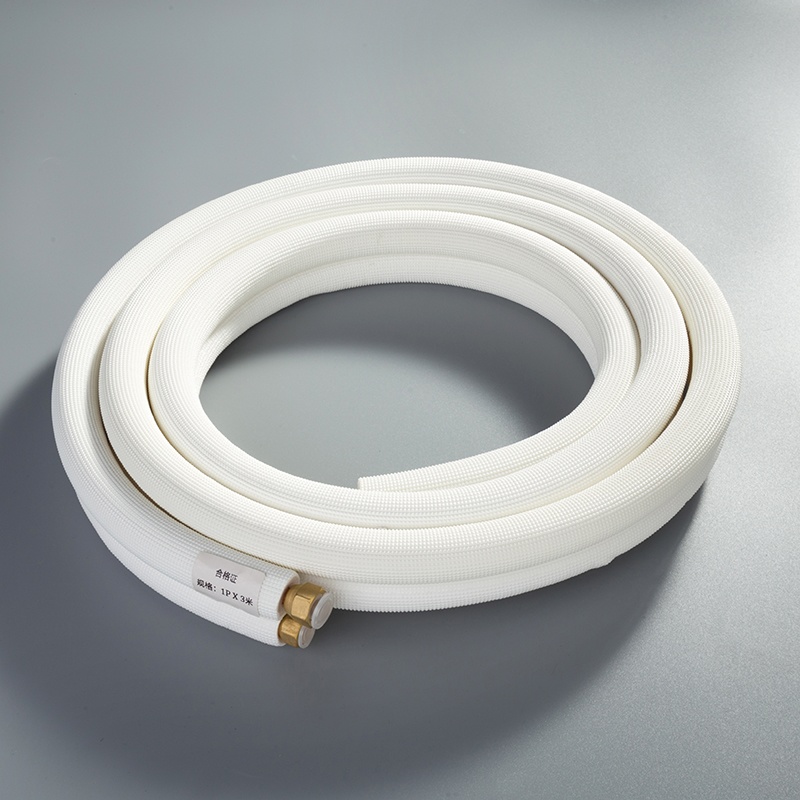Best Copper Pipes for Air Conditioning: A Detailed Review

When it comes to choosing the best air conditioning copper pipes, making the right selection is crucial for ensuring top-notch performance and long-lasting reliability. In this review blog post, we’ll explore why copper pipes are the ultimate choice for air conditioning systems. Known for their exceptional thermal conductivity, copper pipes significantly enhance heat transfer efficiency, leading to reduced energy consumption and improved cooling performance. Their unmatched durability allows them to endure extreme temperatures while resisting corrosion, making them a trusted option for HVAC applications. Additionally, copper’s high antimicrobial properties help prevent bacterial growth, ensuring cleaner and healthier air circulation. As an environmentally friendly material, copper is also fully recyclable, adding to its appeal. This review of the best air conditioning copper pipes underscores their vital role in delivering efficient and sustainable cooling solutions for modern systems.
Types of Copper Pipes Used in Air Conditioning

Copper pipes play a critical role in air conditioning systems due to their durability, thermal efficiency, and corrosion resistance. The two primary types of copper pipes used in HVAC applications are soft copper pipes and hard copper pipes. Each type offers unique characteristics, advantages, and applications that cater to specific system requirements.
Soft Copper Pipes
Characteristics
Soft copper pipes are known for their flexibility and ease of installation. These pipes can be bent without requiring specialized tools, making them ideal for applications where intricate routing is necessary. The smooth interior surface of soft copper pipes minimizes friction, ensuring efficient refrigerant flow. Manufacturers often supply these pipes in coils, allowing for seamless installations with fewer joints.
Advantages and Disadvantages
Soft copper pipes offer several advantages. The flexibility of these pipes reduces the need for fittings, which lowers the risk of leaks. The material’s high thermal conductivity ensures excellent heat transfer, enhancing the overall efficiency of air conditioning systems. However, soft copper pipes are more prone to physical damage, such as dents or kinks, compared to their hard counterparts. This limitation makes them less suitable for exposed installations.
Common Applications
Soft copper pipes are commonly used in split air conditioning systems and refrigeration units. These pipes are ideal for connecting indoor and outdoor units due to their ability to navigate tight spaces. HVAC technicians frequently use soft copper pipes for retrofitting older systems, as their adaptability simplifies the installation process.
Hard Copper Pipes
Characteristics
Hard copper pipes are rigid and durable, offering superior strength for demanding applications. These pipes are manufactured in straight lengths and require cutting and soldering during installation. The robust structure of hard copper pipes provides excellent resistance to physical damage and external pressures. The material’s high corrosion resistance ensures a long service life in various environmental conditions.
Advantages and Disadvantages
Hard copper pipes excel in durability and reliability. The rigid nature of these pipes makes them ideal for permanent installations where structural integrity is essential. The smooth interior surface promotes efficient refrigerant flow, contributing to optimal system performance. However, the lack of flexibility in hard copper pipes necessitates precise measurements and additional fittings, increasing installation time and cost.
Common Applications
Hard copper pipes are widely used in central air conditioning systems and commercial HVAC installations. These pipes are suitable for main refrigerant lines and applications requiring high-pressure resistance. Hard copper pipes are also preferred for underground installations due to their ability to withstand external forces and environmental factors.
Key Factors to Consider When Choosing Copper Pipes
Selecting the right copper pipes for air conditioning systems involves evaluating several critical factors. Each factor directly impacts the performance, efficiency, and longevity of the HVAC system. A well-informed decision ensures optimal functionality and cost-effectiveness.
Durability
Material Quality
High-quality copper pipes provide exceptional strength and reliability in HVAC systems. Superior-grade copper ensures resistance to wear and tear under extreme temperatures. The use of premium materials enhances the lifespan of the pipes, reducing the likelihood of frequent replacements. High-quality copper also supports efficient heat transfer, maintaining consistent cooling performance.
Resistance to Corrosion
Copper pipes exhibit excellent resistance to corrosion, making them ideal for air conditioning systems. Corrosion-resistant properties prevent the formation of leaks and blockages over time. This characteristic ensures uninterrupted refrigerant flow and maintains system efficiency. The ability to withstand environmental factors such as moisture and pollutants further enhances the durability of copper pipes.
Size and Thickness
Standard Sizes
Standard sizes of copper pipes are essential for compatibility with various air conditioning systems. Properly sized pipes ensure efficient refrigerant flow, avoiding pressure drops or restrictions. Manufacturers offer a range of sizes to meet specific system requirements, ensuring seamless integration during installation. Adherence to standard dimensions simplifies maintenance and reduces operational challenges.
Impact on Performance
The thickness of copper pipes significantly influences system performance. Thicker pipes, such as SWG 21, withstand higher operating pressures, minimizing the risk of gas leaks. Enhanced wall thickness improves structural integrity, ensuring long-term reliability. Proper sizing and thickness optimize energy efficiency by maintaining consistent refrigerant circulation.
Cost
Initial Investment
The initial cost of copper pipes varies based on material quality and specifications. High-quality pipes may require a higher upfront investment but deliver superior performance and longevity. Investing in durable copper pipes reduces the need for frequent repairs or replacements. The initial expense is offset by long-term savings in maintenance and operational costs.
Long-term Value
Copper pipes offer excellent long-term value due to their durability and efficiency. The extended lifespan of copper pipes minimizes replacement expenses, providing significant cost savings over time. Energy-efficient properties reduce electricity consumption, lowering utility bills for air conditioning systems. The recyclable nature of copper adds environmental and economic benefits, enhancing overall value.
Comparative Analysis of Popular Copper Pipe Brands
Mexflow Copper Pipe by Mehta Tubes Limited
Features
Mexflow Copper Pipe by Mehta Tubes Limited offers high-quality copper material designed for HVAC applications. The pipe exhibits superior thermal conductivity, ensuring efficient heat transfer in air conditioning systems. The manufacturing process adheres to strict quality standards, guaranteeing durability and resistance to corrosion. The pipe's smooth internal surface minimizes friction, promoting optimal refrigerant flow. Mexflow Copper Pipe is available in various sizes, making it suitable for diverse system requirements.
Pros and Cons
Pros:
High resistance to wear and tear under extreme temperatures.
Excellent corrosion resistance for long-term reliability.
Superior thermal efficiency for energy savings.
Wide range of sizes for versatile applications.
Cons:
Higher initial cost compared to standard-grade copper pipes.
Limited availability in certain regions.
Type K Copper Pipe
Features
Type K Copper Pipe is recognized for its thick wall construction, providing exceptional strength and durability. The pipe is ideal for high-pressure applications and underground installations. The robust design ensures resistance to physical damage and environmental factors. The pipe's high-quality copper composition enhances its longevity and performance in demanding conditions. Type K Copper Pipe complies with industry standards, ensuring compatibility with various HVAC systems.
Pros and Cons
Pros:
Thick walls offer superior pressure resistance.
Suitable for underground and high-pressure installations.
Long lifespan reduces the need for frequent replacements.
High-quality material ensures consistent performance.
Cons:
Increased weight complicates handling during installation.
Higher cost due to thicker wall construction.
SWG 21 Copper Pipe
Features
SWG 21 Copper Pipe features a wall thickness of 0.81mm, making it suitable for air conditioning systems requiring high operating pressure. The pipe's sturdy construction minimizes the risk of gas leaks and premature failure. The material exhibits excellent resistance to corrosion, ensuring reliable performance over time. The pipe's smooth interior enhances refrigerant flow, contributing to efficient cooling. SWG 21 Copper Pipe is widely used in both residential and commercial HVAC applications.
Pros and Cons
Pros:
Thick wall design withstands high operating pressures.
Reduced risk of gas leakage enhances system safety.
Corrosion resistance ensures long-lasting performance.
Smooth interior promotes efficient refrigerant circulation.
Cons:
Limited flexibility increases installation complexity.
Higher initial investment compared to thinner copper pipes.
Best Practices for Installing Copper Pipes in Air Conditioning Systems

Preparation
Tools and Materials Needed
Proper preparation ensures a smooth installation process for copper pipes in air conditioning systems. Essential tools include a pipe cutter, deburring tool, and flaring tool for precise pipe adjustments. A tube bender is necessary to create accurate bends without damaging the pipe structure. Soldering equipment, such as a torch and solder, is required for secure joint connections. Additional materials include flux, pipe insulation, and a measuring tape to ensure proper alignment and fit.
Safety Precautions
Safety precautions protect both the installer and the system during the installation process. Adequate ventilation prevents the accumulation of harmful fumes from soldering. Protective gear, such as gloves and safety goggles, shields against burns and debris. Ensuring the workspace is free from flammable materials reduces fire risks. Verifying that the air conditioning system is powered off prevents electrical hazards. Following manufacturer guidelines ensures compliance with safety standards.
Installation Process
Step-by-Step Guide
A structured approach guarantees successful installation of copper pipes in air conditioning systems:
Measure the required pipe length using a measuring tape.
Cut the pipe to the desired length with a pipe cutter.
Deburr the edges to remove sharp or uneven surfaces.
Use a tube bender to create necessary angles for proper alignment.
Apply flux to the pipe ends and fittings to prepare for soldering.
Heat the joint area with a torch and apply solder to create a secure connection.
Inspect the joints for leaks and ensure a tight seal.
Install pipe insulation to enhance thermal efficiency and prevent condensation.
Common Mistakes to Avoid
Avoiding common mistakes ensures the longevity and performance of copper pipes. Incorrect pipe sizing can lead to inefficient refrigerant flow. Overheating during soldering may weaken the pipe material. Skipping the deburring process increases the risk of blockages. Improper alignment of pipe joints compromises system integrity. Neglecting to insulate pipes results in energy loss and condensation issues.
Maintenance Tips
Regular Inspections
Routine inspections maintain the efficiency of copper pipes in air conditioning systems. Checking for signs of corrosion prevents leaks and blockages. Monitoring the condition of pipe insulation ensures consistent thermal performance. Identifying and addressing minor issues early reduces the likelihood of costly repairs. Consulting an HVAC specialist for periodic assessments ensures professional evaluation and maintenance.
Cleaning and Upkeep
Proper cleaning and upkeep extend the lifespan of copper pipes. Removing dirt and debris from the pipe surface prevents contamination. Using a mild cleaning solution maintains the pipe's appearance and integrity. Replacing damaged insulation preserves energy efficiency. Scheduling professional maintenance services ensures thorough cleaning and optimal system performance.
Copper pipes remain the cornerstone of efficient air conditioning systems due to their durability, thermal conductivity, and corrosion resistance. The review highlighted the importance of selecting high-quality materials, considering factors such as durability, size, thickness, and cost. Investing in premium copper pipes ensures long-term performance and energy efficiency. Prioritizing both quality and cost-effectiveness guarantees optimal system functionality. Sharing personal experiences or inquiries about copper pipes fosters a collaborative learning environment. Engaging with others enriches knowledge and aids in making informed decisions.
See Also
The Advantages Of Using Copper Pipes In Air Conditioning
Transforming Air Conditioning With High-Quality Copper Pipes
The Essential Role Of Copper Pipes In Air Conditioning

